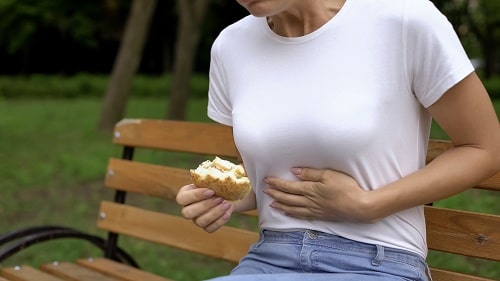Food poisoning occurs when harmful pathogens such as parasites, toxins, bacteria, or viruses contaminate food and cause illness. The terms foodborne disease or foodborne illness are used interchangeably to describe the condition. Patients may feel irritation, infection, or inflammation of the gastrointestinal (GI) tract.
These disease-causing infectious organisms may have contaminated the food through unsanitary factory food production, improper packaging, or mishandling at home using improperly washed kitchenware and exposure to parasites.
The most common symptoms are vomiting and diarrhea. It is typically a self-limiting disease that resolves spontaneously with or without medication. However, cases vary from mild to severe depending on an individual’s immune system, age, and overall health.
Types of Food Contamination
Food poisoning can occur anytime at any place. Everyone must be highly aware of what one is eating and drinking; it may result in hospitalization, complications, or death. Knowing how this certain illness can be acquired may also help prevent it. Here are the 3 types of food contamination:
a. Physical contamination – occurs when any object in the surrounding contaminates food products. Prevent this by practicing general sanitary measures during food production and packaging inspections. Dust, dirt, hair, pests, fingernails, metal, glass, or jewelry may contain harmful pathogens that contaminate food and water.
b. Chemical contamination – happens when there is contact between food products and chemical substances such as pest control products and cleaning agents.
The quantity ingested is a significant factor in determining its effects and severity in an affected person. Proper handling of chemicals around the house, office, or any setting is important to prevent this kind of poisoning.
c. Biological contamination – is the presence of bacterial growth and parasite infestation or its toxin on food products. These infectious agents are found in clothing, dust, cloths, rags, pests, pets, human bodies, and raw meat.
Other ways of food contamination include eating raw or uncooked meat, unpasteurized dairy products, unwashed fresh produce, using contaminated hands to prepare the food, and storing perishable goods at room temperature for a while. To kill the bacteria, food must be cooked at 149°F (65°C).
Keeping meat, eggs, vegetables, and other food products in the refrigerator is the safest way to avoid contamination at home. When they are left in the open, they can be exposed to many sources of harmful pathogens that may contaminate the food.

The Symptoms of Food Contamination
Many food poisoning cases recover on their own with or without medication. Factors such as age, overall health, and immune response differ from person to person. Young, old, pregnant, and individuals with comorbidities and chronic conditions that compromise the body’s natural defenses are more susceptible.
Food poisoning’s most common symptoms are vomiting, diarrhea, fatigue, and nausea. Immediate medical attention is needed when severe symptoms occur, such as severe dehydration, severe abdominal pain, bloody vomit or stools, prolonged diarrhea, high fever, general body weakness, blurred vision, body numbness, tingling, or paralysis.
Symptoms can arise minutes, hours, or a day after ingestion and may last for a few hours to several days. They can be mild, moderate, or fatal depending on the type and virulence of the harmful pathogen, quantity ingested, and the body’s immune response to fight the infection.
Here is a brief guide on the medication and treatment of food poisoning:
Oral Dehydration Solutions – or rehydration salts are a mixture of carbohydrates and electrolytes used to replace salts, minerals, and water in the body. They prevent dehydration and can be bought over-the-counter in drug stores and pharmacies.
Food poisoned individuals must drink water to replenish the lost salts and fluids in vomiting and diarrhea. Dehydration can lead to a more serious complication or death. If symptoms persist, seek medical attention. Fresh fruit juices, broths, ginger tea, and sports drinks are recommended as a home remedy.
Non-prescription loperamide – can be used to control and treat loose bowel movement (LMB) due to food poisoning. It is taken orally as a solution, capsule, or tablet and is usually used in mild to moderate cases.
Bismuth subsalicylate – is a widely used antidiarrheal agent that reduces electrolyte and fluid flow to the bowel, kills diarrhea-causing pathogen, treats stomach and intestine inflammation.
Antibiotics – are prescription drugs effective for food poisoning caused by bacteria. It may be taken orally or intravenously, depending on the doctor’s discretion. Young, old, pregnant, and immunocompromised individuals are immediately treated with antibiotics to control and prevent the worsening of symptoms.
In Conclusion
Proper handling and storing of food and water are vital in avoiding contamination at home. Strict sanitary measures, food production, and packaging inspection must be implemented in factories distributing companies and groceries.
A detailed list of consumed food and proper diagnosis is essential to determine the disease-causing pathogen. Food poisoning is inevitable and may result in a serious and fatal condition. It is very important to take medication to cure the symptoms and prevent dehydration or rush to the nearest hospital to get immediate treatment.

















![Sirio Launches Global Research Institute for Longevity Studies [SIA]](https://www.worldpharmatoday.com/wp-content/uploads/2019/09/Sirio-218x150.jpg)

